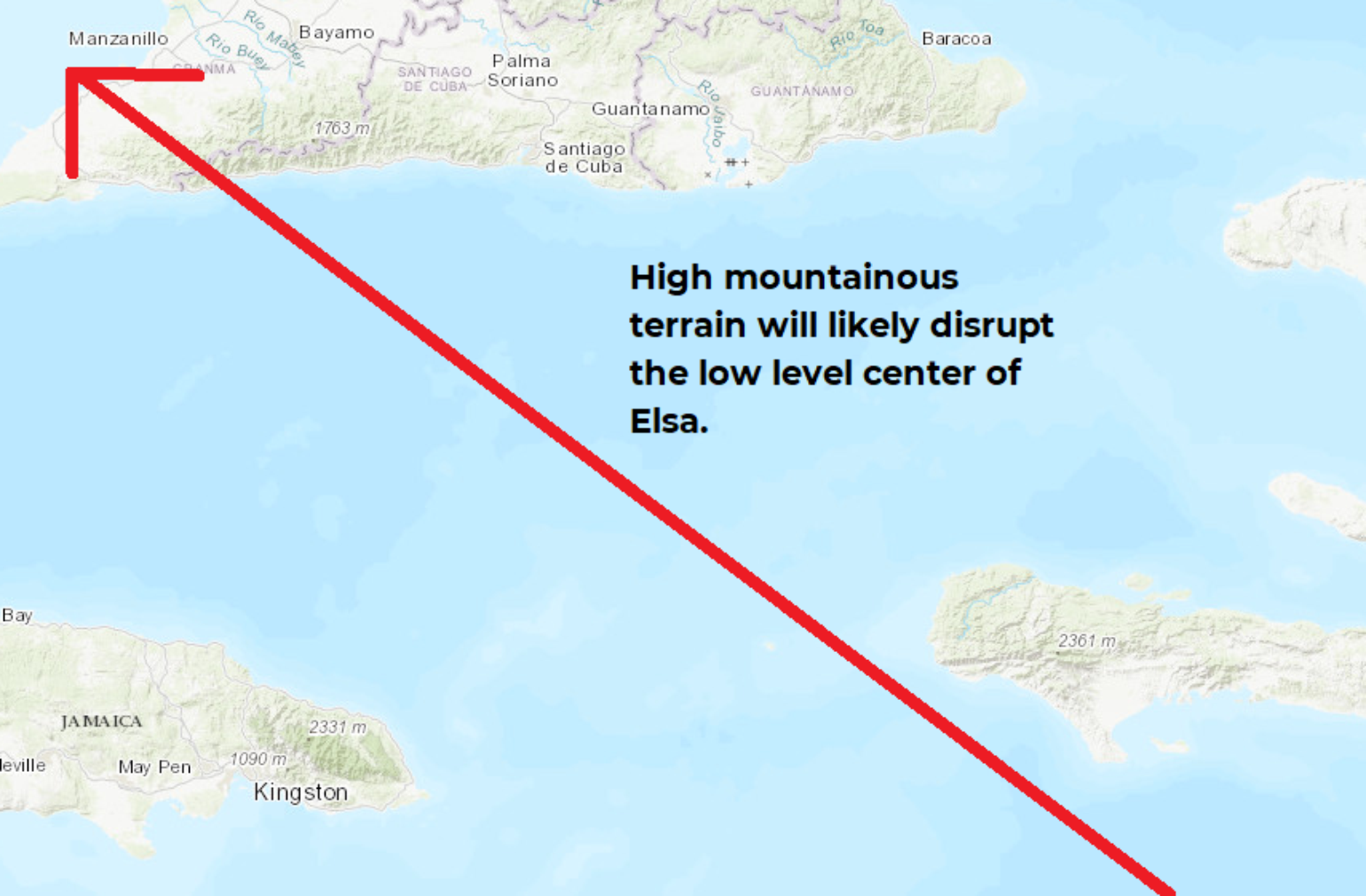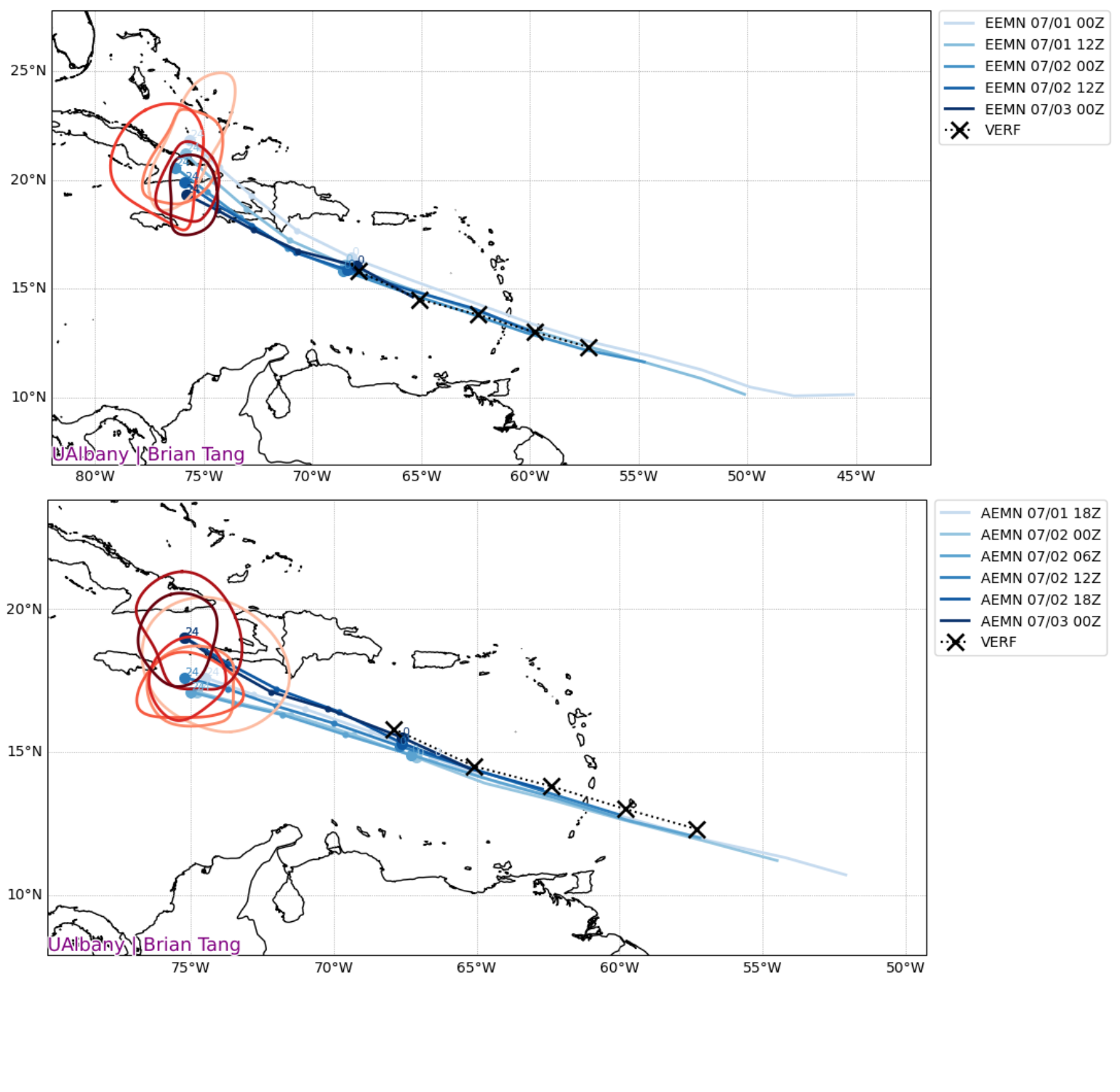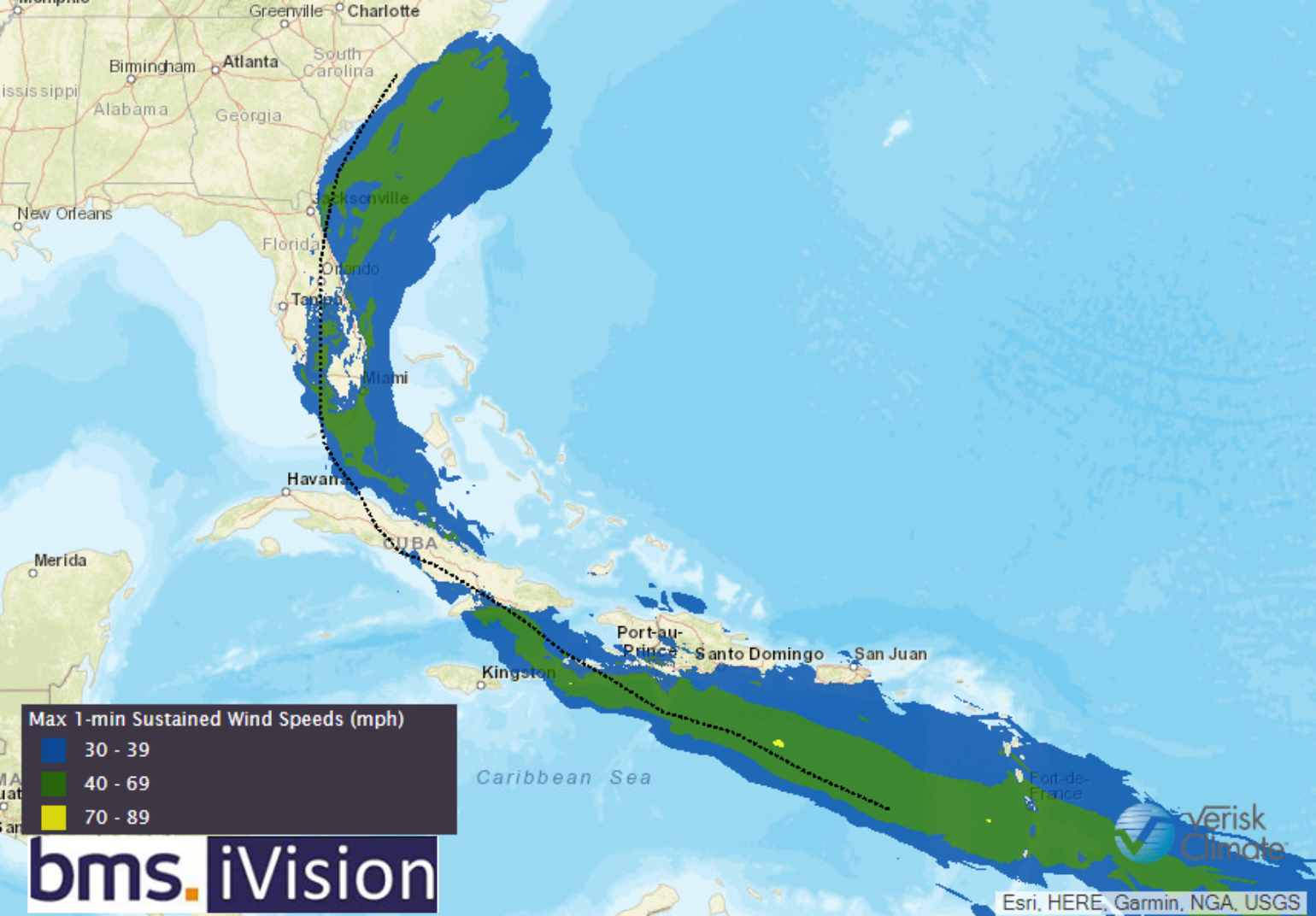After rapidly intensifying into a hurricane yesterday morning Elsa is struggling with low-level wind shear as its low-level center is displaced about 90 miles northwest of any organized convection. This is not a sign of a healthy hurricane and was downgraded this morning. This disorganization also means the low-level center could be completely disrupted by the very high topography of Haiti and Cuba, which have mountainous terrain up 7,700 feet above sea level.

If the terrain of the high mountains does not disrupt the overall structure of Elsa, then the forecasted track over much of Cuba will also not help any reorganization as its center moves over land that will deprive it of warmer sea surface waters. The other aspect that will likely weaken Elsa is its continued fast-forward motion. It is traveling West-Northwest at 31 mph, and is moving basically at a speed that might be observed from a named storm in the North Atlantic of the East Coast of the U.S. This is remarkably fast and is one of the fastest moving hurricanes to be observed in the Caribbean. The only other storms that have moved this fast south of 20 degrees North were Colin on August 3rd 2010 and Chantal on July 10th, 2013. Both of these were just tropical storms and not hurricanes, which makes Elsa's forward speed in the deep tropic that much more impressive. Lastly, Elsa has a low pressure of 999 mb, which is fairly high for a hurricane. This also suggests its overall structure will have a hard time with any land interactions.
Yesterday’s BMS insight went into great detail discussion on which forecast model might be the better model given the great amount of uncertainty in the track and intensity forecast. Now that we have a few days of track and intensity forecasts to verify from Elsa we can see that Elsa appears to be tracking near the northern edge of the GFS forecast guidance and near the southern edge of the ECMWF guidance. In terms of intensity, the ECMWF missed the intensification of Elsa yesterday as it tracked over the Windward islands, but looks like it correctly forecasted the hostile conditions that Elsa would struggle with as it approaches Cuba and Hati today. The GFS on the other hand picked up on the early intensification of Elsa in the Windward island, but failed to pick up on the weaker state of Elsa as it approaches Cuba and Haili today. This is why it is sometimes good to blend the forecast, especially when there are so many unknowns factors that could come into play. A blending of forecasts is often what the human forecasters do at the National Hurricane Center and why they have one of the best track and intensity forecasts, as pointed out yesterday.

At this time the U.S. insurance industry impacts appear to be minimal given the weakened state of Elsa. The BMS iVision Verisk Respond Hurricane forecast shows Elsa’s center tracking along the southern coast of Cuba and turning north over the Straits of Florida. This will leave little time for Elsa to reorganize if its low-level center even makes it this far, which is doubtful based on observations this morning.

As Elsa is expected to track over Florida over the first half of next week the insurance industry could still feel some impacts. Based on the current NHC OFCL forecast a landfall location might be just south of Hurricane Eta 2020, which had a surprisingly high level of insured loss at over $700M for a tropical storm impacting Florida. The forecast intensity and structure of Elsa does not look like it will be near Eta and the impacts of every storm are different; however, gust winds and rain can still cause pockets of insured loss depending on the track, which has some uncertainty at this time. If Elsa maintains any structure over the next 36 hours it could cause wind gusts up to 50 mph in isolated coastal sections of south Florida with disorganized heavy rainfall. But given the forward motion, any flooding impacts will be minimal at this time.
Yesterday's quick intensification got the insurance industry on edge and for good reason. Last year was an impactful year and Elsa, as suggested in the BMS Insights on July 1, may be just an early warning sign of the possible tracks that named storms might take this hurricane season as the bulk of the season starts to ramp up. The good news is an area of large-scale sinking upper air motion is starting to dominate the Atlantic ocean. This might also be playing into the weakening of Elsa, which is why you do not see the NHC tracking any other systems across the Atlantic Basin. This means that the next few weeks will be relatively quiet in the Atlantic basin with the next active pulse of upper air expected to enhance African Wave activity after July 24th or so.
If Elsa continues on its current weakening state this may be the last BMS Tropical update for a while, but if larger insurance industry impacts look to occur with Elsa another BMS Troipal update will be provided. Right now the insurance industry just wants to “Let it Go, Let it Go” so the long U.S. holiday weekend can be enjoyed.
